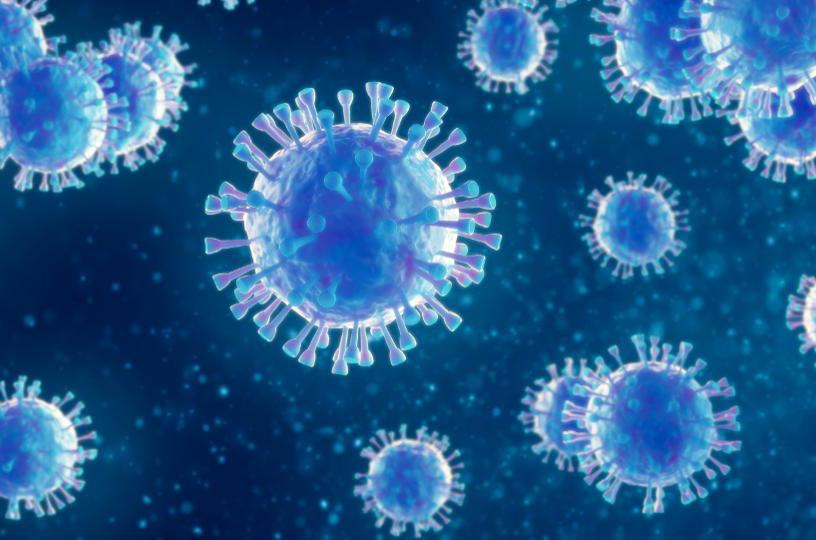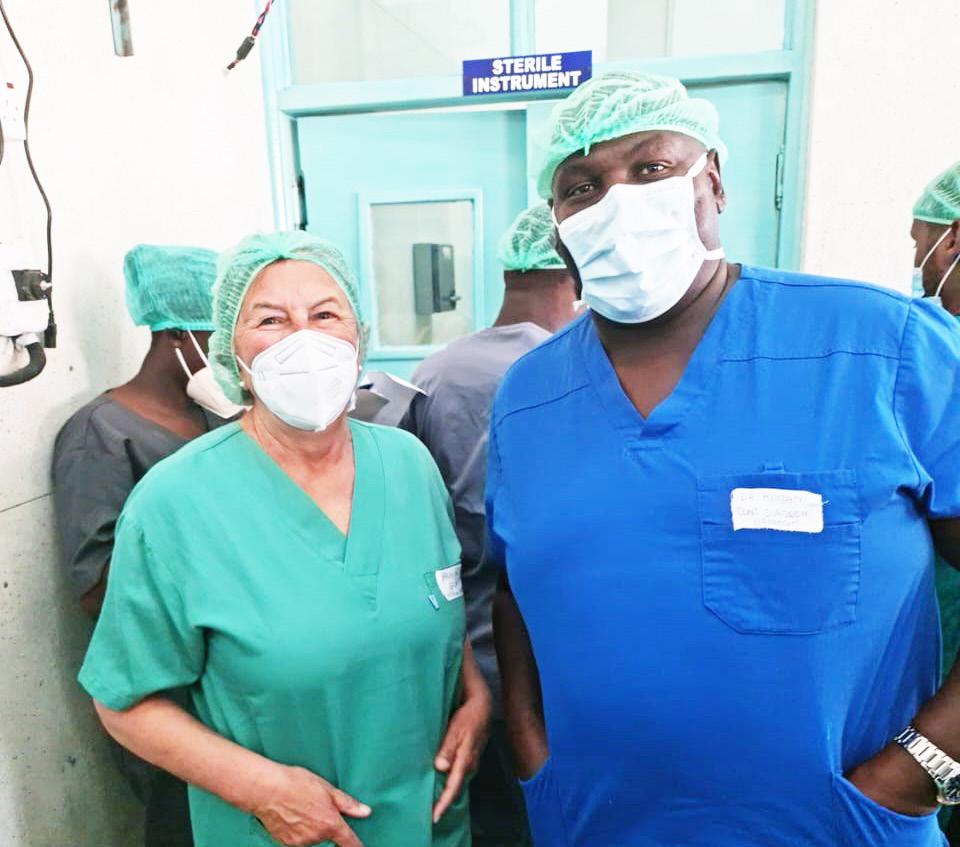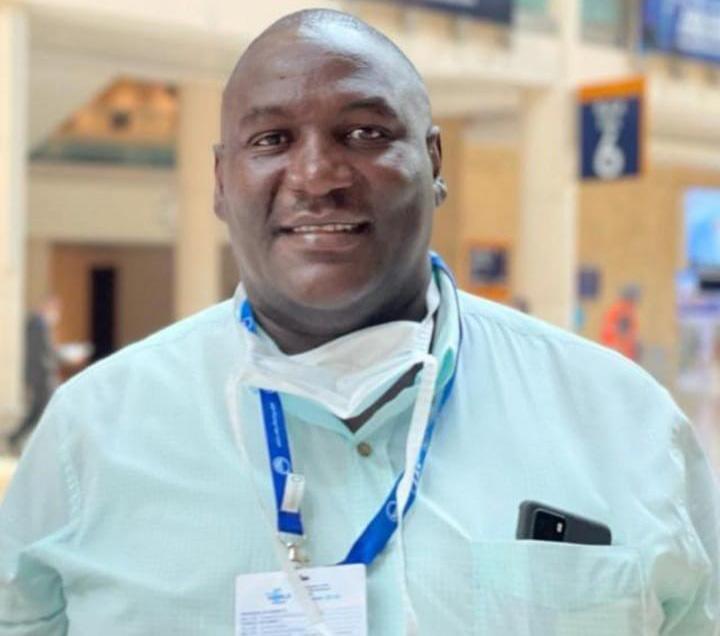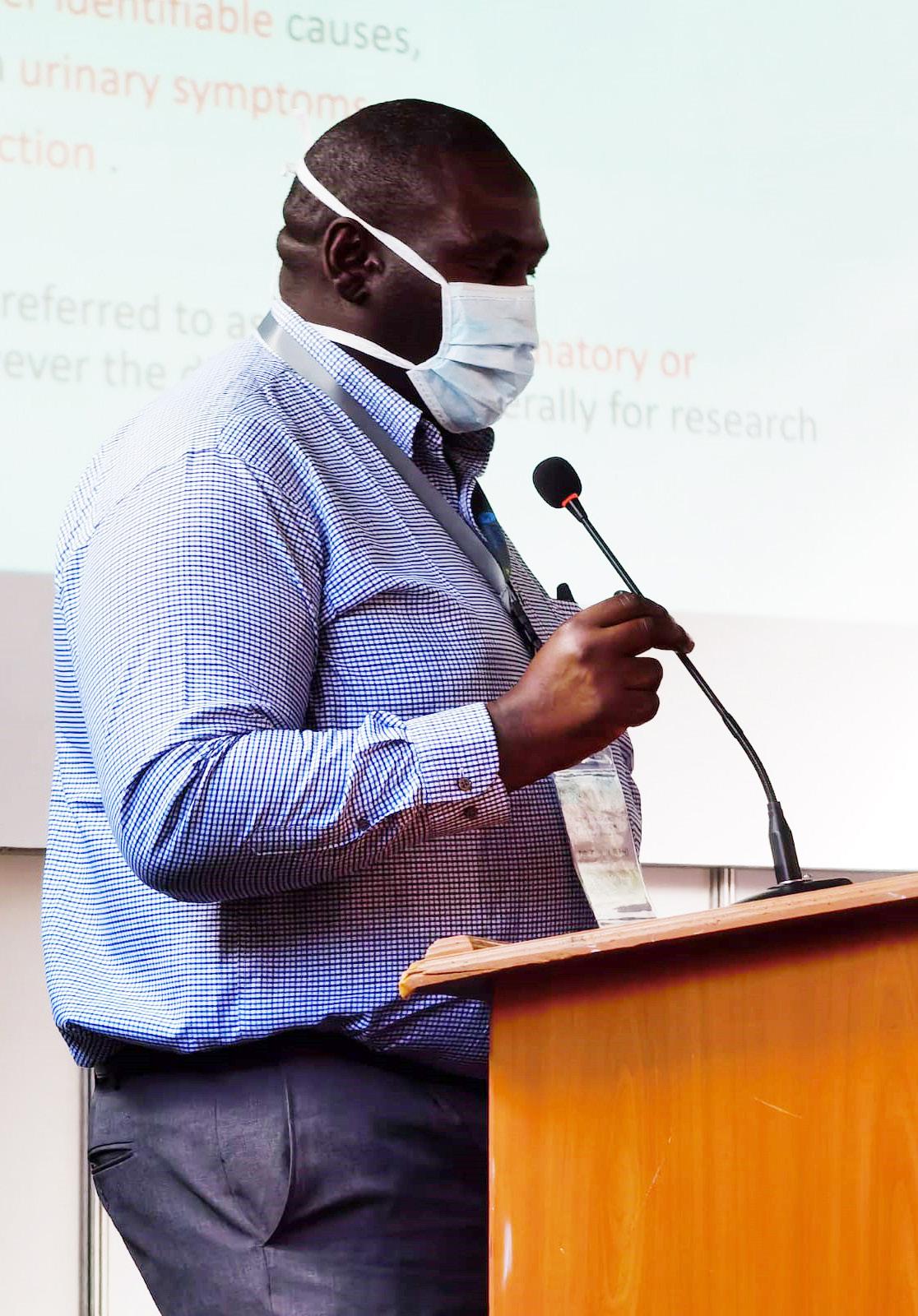
8 minute read
Editor’s note Prostate Cancer: A disease of the aging male
Contents
ISSUE 14
Advertisement
Editor’s note p.2 Prostate Cancer: A disease of the aging male
p.3-4
Phantom limb pain, phantom sensation, and residual limb pain p. 5-6 Disaster preparedness training for MMUH staff
p.7
Nicholas Wesonga Wamalwa: The bubbly photographer. p. 8 A case for active TB case finding p.9-10 The first-ever bundle of gifts for MMUH p.10 MMUH opens Chaplaincy Hall p.10 March birthdays p.11 - 12 The KNH 4th Cohort Nursing process certification p.13 The first-ever Family Week at KNH p.14 - 15 Boost as KNH Security officers train on Security Certification Compliance Course p.15 Our story in pictures p.16 KNH participates in the first Damu-KE conference p.17 KNH School of Nursing holds tracheostomy care training for nurses p.17 Twins: A miracle unfolds at KPCC p.18 KPCC holds medical outreach at Royal Nairobi Golf Club p.19 Karate classes at KNH p.19 Comic zone p. 20
ON THE COVER
Prostate Cancer: A disease of the aging male P. 3
Marketing & Communication Department
Design Concept Team:
Dave Opiyo, Edel Q. Mwende, Yvonne Gichuru & Collins Cheruiyot
Editorial Team:
Dave Opiyo , Edel Q. Mwende, Luke Kung’u, Yvonne Gichuru, Priscah Angwenyi & Linnette Leyi
Stories:
Verah Mugambi, Linnette Leyi, Edel Q. Mwende, Jacqueline Ngure, , Petterson Njogu, Luke Kung’u,
Shiphrah Njeri, Cynthia Cherono, Dr. Tabitha
Munyoki, Yvonne Gichuru, Peter Githua, Steven Arwa & Shawn Paul Omondi Design By: Collins Cheruiyot Photos:
Nicholas Wamalwa, Linnette Leyi, Shawn Paul Omondi, Petterson Njogu, Joan Macharia,
Jacquline Ngure, Cynthia Cherono, Thellesi Co,
Elijah Ng’ang’a, Steven Arwa & Nahashon Ogigi
Tel: +254 20 2726300-9
Ext. 43121 or 43969
Fax: +254 20 272572 Email: caffairs@knh.or.ke knh.caffairs@gmail.com
To contribute or report on newsworthy items, please contact the Editorial team.
Editor’s note
Dear Colleagues,
COVID-19 keeps rearing its ugly head again and again leaving a trail of destruction, unfathomable devastation compounded by the untimely loss of lives and livelihoods.
Like an enemy within, there is an incessant need to positively identify and deal with it as per the approved guidelines from either a personal, national or international level. We call upon all not to let the guard down lest we erode the gains achieved so far. Our commitment and resolve remain the same; to defeat the common enemy.
To this end, we call upon all and sundry to:
• Wear your mask appropriately • Observe frequent hand hygiene • Get vaccinated against COVID-19 ; AstraZeneca, Pfizer, Johnson & Johnson are all available at KNH • Avoid overcrowded places
All the Newslines and Newsletters can be accessed online at: https://bit.ly/3uQGCcI
Mr. Luke Kung’u CACAOII Marketing & Communication Kenyatta National Hospital
Find us on Social Media
Kenyatta National Hospital @CeoKnh @KNH_hospital
Kenyatta National Hospital Official Page www.knh.or.ke
Prostate Cancer: A disease of the aging male
By Verah Mugambi
The human body is made up of trillions of cells that over a lifetime normally grow and divide as needed. When cells are abnormal or get old, they usually die. When something goes wrong in this process, it serves as the onset of cancer. The cells keep making new ones while the old or abnormal ones don’t die as they should.
Cancer affects both men and women. The most common cancers for men are prostate, colorectal, lung, and skin cancers. Knowing about these cancers and what one can do, helps in the prevention or early detection and management. When the lumps are small, and the disease hasn’t spread, it might be easier to treat hence saving a life.
Newsline enlightens on Prostate Cancer; its symptoms, treatment, and all there is to know about it. To help us demystify this type of cancer, we had a sit down with Dr. David Kimani, a consultant Urologist at Kenyatta National Hospital.
He explains: “This disease occurs in the prostate and is one of the most common types of cancer in men. The prostate is a small walnut-shaped gland in males that produces the seminal fluid that nourishes and transports sperm. The prostate gland is located just below the bladder in males and surrounds the top portion of the tube that drains urine from the bladder (urethra).”
“Prostate cancer is the leading solid cancer in men in Kenya. The lifetime risk of patients getting cancer of the prostate is in the ratio of 1 in 8 men. Since it is very common, people get worried about it, but the reality is that if you research well, the risk of dying from prostate cancer is 3%,” revealed Dr. Kimani.
“This means there are many patients who will live with prostate cancer, and sometimes die with prostate cancer but not because of prostate cancer,” Dr. Kimani explains, busting the myth of prostate cancer being the number one cancer killer in men.
According to the doctor, the prostate is a gland within the male that changes in its anatomy and its size with age. “The chance of getting prostate cancer goes up as a man gets older. For all men beyond the age of 40, their prostate starts increasing in size, though the rate at which they increase will differ from one individual to another,” Dr. Kimani continues.
Symptoms
Prostate cancer may cause no signs or symptoms in its early stages, but when it is more advanced, it may cause symptoms
“ “For all men beyond the age of 40, their prostate starts increasing in size, though the rate at which they increase will differ from one individual to another,”

- Dr. Kimani.
PHOTO | COURTESY
Dr. David Kimani with a colleague at the KNH Main Theatre after a prostate surgery.
such as difficulty urinating, decreased force in the stream of urine, blood in the urine, blood in the semen, bone pain, unexplained weight loss and erectile dysfunction.
Several risk factors cause prostate cancer. The common causes include age, hereditary, and race. Other factors known but not scientifically proven but are suspected to contribute to high chances of getting prostate cancer include lifestyle and physical fitness.
The major risk factors are: • Old age- The risk of prostate cancer increases as one grows old. It’s most common after age 40 and the average age of
diagnosis is about 68 years. • Family history/heredity- If a blood relative, such as a parent, sibling, or child, has been diagnosed with prostate cancer, one’s risk may be increased.
Also, if one has a family history of genes that increase the risk of breast cancer (BRCA1 or BRCA2) or a very strong family history of breast cancer, their risk of prostate cancer may be higher. • Race- For reasons not yet determined, black people have a greater risk of prostate cancer than people of other races. In black people, prostate cancer is also more likely to be aggressive or advanced.
Screening for prostate cancer
“Now here is where the problem lies. The unpleasantness of putting a finger through the rectum also called Digital Rectal Exam just to feel the prostate or the doctors can request one to do the blood test, discourages many,” explained Dr. Kimani. • Digital Rectal Exam (DRE):
During a DRE, the doctor inserts a gloved, lubricated finger into a male’s rectum to examine their prostate; which is adjacent to the rectum. If the doctor finds any abnormalities in the texture, shape, or size of the gland, one may need further tests. • Prostate-Specific Antigen (PSA) test: A blood sample is drawn from a vein in the patient’s arm and analyzed for PSA, a substance that’s naturally produced by one’s prostate gland. It’s normal for a small amount of PSA to be in a man’s bloodstream. However, if a higher than usual level is found, it may indicate prostate infection, inflammation, enlargement, or cancer.
If prostate cancer screening detects an abnormality, the doctor may recommend further tests to determine whether one has prostate cancer, such as Ultrasound, CT scan, MRI, or collecting a sample of prostate tissue/prostate biopsy.
Prostate biopsy is often done using a thin needle that is inserted into the prostate to collect tissue. The tissue sample is analyzed in a lab to determine whether cancer cells are present.
“It is only a pathologist who concludes if one has cancer or not. One may have an MRI that suggested they have cancer or examination symptoms that suggested they have cancer, but all these are suggestions. Unless the pathologist looks at the prostate tissue and says there is cancer, only then we will label you as a cancer patient,” Dr. Kimani insisted.

Treatment
Prostate cancer treatment options depend on several factors, such as how fast one’s cancer cells are growing, whether it has spread, and one’s overall health, as well as the potential benefits or side effects of the treatment.
“Since different treatments have variable effects, it is important to outline the options available to the patient. This may include; surgery or radiation; this is used when the cancer is of low grade and confined to the prostate gland (localized disease) and therapies such as hormonal and chemotherapeutic options are generally used when the malignancy has spread from the prostate to other areas of the body (i.e., advanced disease).
“Treatments for localized prostate cancer can result in a cure, but those for advanced disease are mainly used to delay disease progression or palliate symptoms. Bottom line, as long as you have a prostate, that means you are a man and therefore are at a lifetime risk of developing prostate cancer. We urge men from the age of 40 years to see a doctor and discuss what their prostate cancer risk level is with the doctor’s advice, one may go through a screening process and if the disease is found in its early stages, they can be healed,” Dr. David Kimani concluded.

PHOTO | COURTESY
Dr. David Kimani giving a talk at The Kenya Association of Urological Surgeons (KAUS) conference in Kitui county.
“ We urge men from the age of 40 years to see a doctor and discuss what their prostate cancer risk level is with the doctor’s advice” - Dr. Kimani
PHOTO | COURTESY







